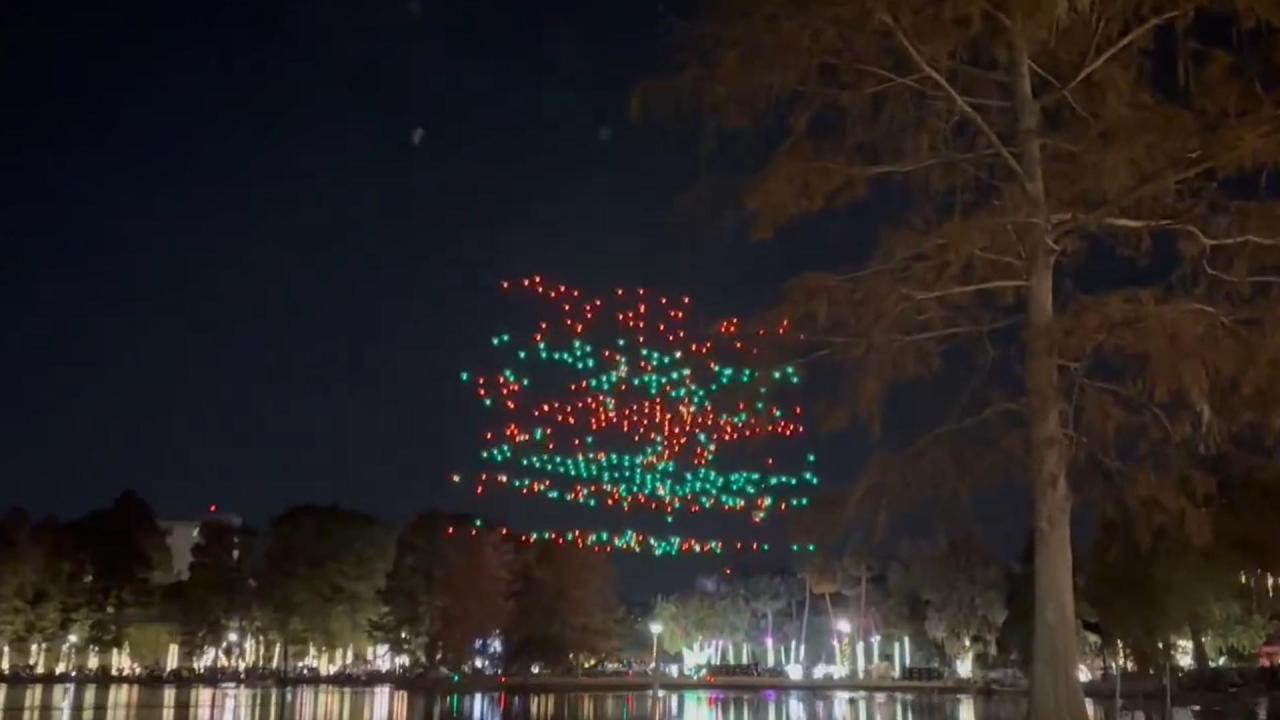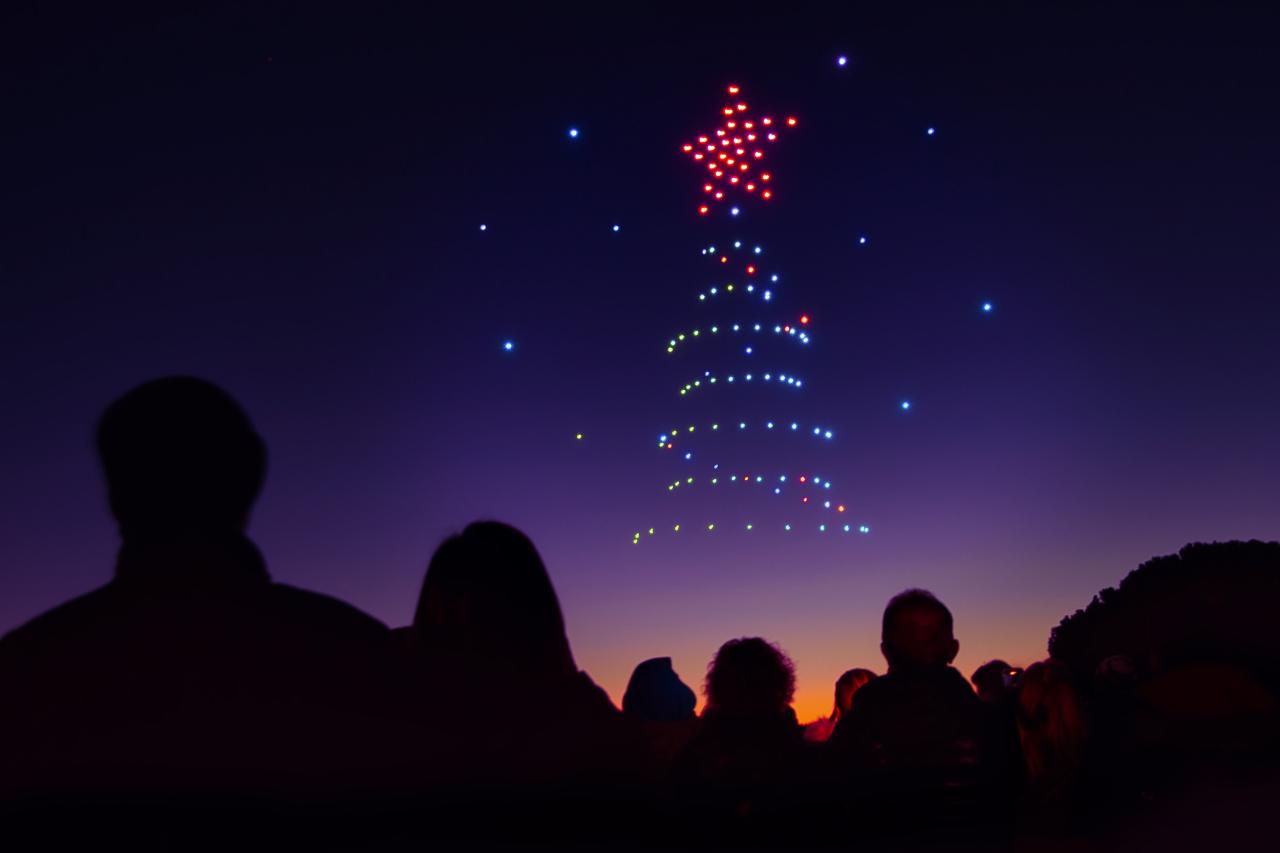Drone show accidents, while relatively rare, highlight critical safety concerns within the rapidly expanding world of drone technology. These incidents underscore the need for robust safety protocols, advanced technological safeguards, and meticulous human oversight to prevent future occurrences and ensure the continued enjoyment of these spectacular displays. This exploration delves into the various facets of drone show accidents, examining their causes, consequences, and potential preventative measures.
From malfunctions stemming from technological limitations to human error in planning and execution, a comprehensive understanding of these factors is crucial. We’ll investigate the roles of pilot training, regulatory frameworks, and post-accident investigation procedures in mitigating risks. Further, we will explore how emerging technologies and improved safety protocols can contribute to a safer future for drone shows.
Drone Show Accidents: A Comprehensive Analysis

Drone shows, while spectacular, carry inherent risks. Understanding the various factors contributing to accidents is crucial for improving safety and preventing future incidents. This analysis delves into the types of accidents, safety protocols, technological limitations, human error, post-accident procedures, liability considerations, and future trends in drone show safety.
Types of Drone Show Accidents

Drone show accidents range from minor malfunctions to catastrophic events resulting in injuries or fatalities. Malfunctions can stem from various causes, including software glitches, GPS interference, mechanical failures, and pilot error. The severity of an accident is determined by the extent of damage, the number of drones involved, and any resulting injuries or fatalities.
| Accident Type | Cause | Severity | Outcome |
|---|---|---|---|
| Collision between drones | GPS signal loss, pilot error | Significant damage to multiple drones | Show cancellation, drone repairs |
| Single drone crash | Mechanical failure, software glitch | Minor damage, no injuries | Replacement drone deployed, show continues |
| Multiple drone malfunction | Power outage, communication failure | Significant damage, minor injuries to spectators | Show cancellation, investigation launched |
| Drone falling into crowd | Pilot error, strong winds | Fatalities and serious injuries | Lawsuits, criminal charges |
Safety Protocols and Regulations
Robust safety protocols are paramount for preventing drone show accidents. These protocols vary across countries and regions, but generally include pre-flight checks, emergency response plans, and pilot training requirements. The FAA in the US, for example, has specific regulations for commercial drone operations, including airspace restrictions and pilot certifications. European regulations, under EASA, also provide a framework for safe drone operation, with similar emphasis on pilot competency and risk mitigation.
Recent drone show accidents highlight the need for robust safety protocols. These incidents underscore the importance of precise coordination, similar to the logistical complexity involved in tracking Santa, which you can learn more about by checking the norad santa tracker phone number. Ultimately, preventing future drone show mishaps requires a multifaceted approach encompassing thorough planning and rigorous oversight.
- Pilot training and certification are essential for ensuring competency and adherence to safety regulations.
- Pre-flight checklists should cover all aspects of drone operation, including battery levels, GPS signal strength, and communication systems.
- Emergency response plans should Artikel procedures for dealing with various scenarios, such as drone malfunctions, loss of signal, and adverse weather conditions.
Technological Factors Contributing to Accidents
Technological limitations can contribute to drone show accidents. GPS signal interference or loss can cause drones to lose their position, leading to collisions or crashes. Software glitches or firmware errors can cause unexpected behavior, potentially resulting in uncontrolled drone movements. Redundant systems and fail-safes are crucial for mitigating these risks. For instance, a backup power system can prevent a drone from falling from the sky due to battery failure, and multiple communication channels can maintain control even if one fails.
Human Error in Drone Show Accidents

Human error is a significant factor in many drone show accidents. Inadequate planning, poor communication among pilots, and pilot errors can lead to collisions, crashes, or other incidents. Improved communication strategies, such as the use of dedicated communication channels and clear command structures, are essential for mitigating these risks. Regular training and simulation exercises can help pilots develop their skills and enhance their response to unexpected situations.
- Pilot error: Improper handling of controls, failure to follow procedures. Preventative measure: Rigorous training and proficiency testing.
- Inadequate planning: Insufficient risk assessment, lack of contingency plans. Preventative measure: Thorough pre-show planning and simulations.
- Poor communication: Lack of clear communication channels, miscommunication among pilots. Preventative measure: Dedicated communication systems and clear protocols.
Post-Accident Investigation and Response
A thorough investigation is crucial after a drone show accident to identify the root cause and prevent future incidents. This typically involves collecting data from the drones, reviewing flight logs, interviewing witnesses, and analyzing weather conditions. The investigation report should clearly document the findings and provide recommendations for improving safety procedures. Emergency response plans should include procedures for evacuating spectators, securing the accident site, and providing medical assistance.
Insurance and Liability in Drone Shows
Drone show organizers, pilots, and other stakeholders need appropriate insurance coverage to protect themselves against liability in case of an accident. Liability can extend to property damage, injuries, and even fatalities. The legal implications of drone show accidents can be complex, and it’s crucial to understand the relevant regulations and insurance policies.
A hypothetical scenario: A drone crashes into a spectator, causing injury. The liability could fall on the drone show organizer for inadequate safety measures, the pilot for operational errors, and the drone manufacturer for potential product defects. Comprehensive insurance policies are essential to cover these potential liabilities.
Drone show accidents, unfortunately, are a growing concern as the technology advances. The increasing complexity of these displays necessitates stringent safety protocols. For a recent example of such an incident, and a detailed analysis of the contributing factors, you can refer to this report on a drone show accident. Understanding these accidents is crucial for improving safety measures and preventing future occurrences in the drone show industry.
Future Trends and Preventative Measures, Drone show accident
Emerging technologies, such as AI and machine learning, have the potential to enhance drone show safety. AI-powered systems can monitor drone performance, detect anomalies, and automatically intervene to prevent accidents. Improved communication and data sharing between drones can enhance coordination and avoid collisions. The development of more robust and reliable drone systems, with built-in redundancy and fail-safes, will further improve safety.
Furthermore, increased standardization of safety protocols and regulations across different regions will promote a more consistent approach to drone show safety worldwide.
Ultimately, preventing drone show accidents necessitates a multifaceted approach. This includes stringent adherence to safety regulations, rigorous pilot training, the integration of advanced technologies, and a culture of continuous improvement in operational procedures. By addressing both technological vulnerabilities and human error, the industry can work towards minimizing risks and ensuring that drone shows remain a safe and spectacular form of entertainment.
Detailed FAQs
What types of insurance are essential for drone show operators?
Drone show operators should carry liability insurance to cover potential damages or injuries caused by their drones. Additional coverage for drone damage or loss is also recommended.
Drone show accidents, while rare, highlight the inherent risks involved in these spectacular displays. The recent incident involving a malfunctioning drone underscores the need for rigorous safety protocols. For instance, the meticulous planning evident in events like the orlando drone show serves as a benchmark for others to emulate, aiming to minimize the chance of similar mishaps.
Ultimately, preventing drone show accidents requires a combination of advanced technology and careful operational procedures.
What is the typical penalty for violating drone show regulations?
Penalties vary by jurisdiction but can range from fines to license suspension or revocation, depending on the severity of the violation.
How can spectators stay safe during a drone show?
Spectators should follow any instructions provided by show organizers and remain in designated viewing areas. They should avoid approaching or interacting with the drones.
